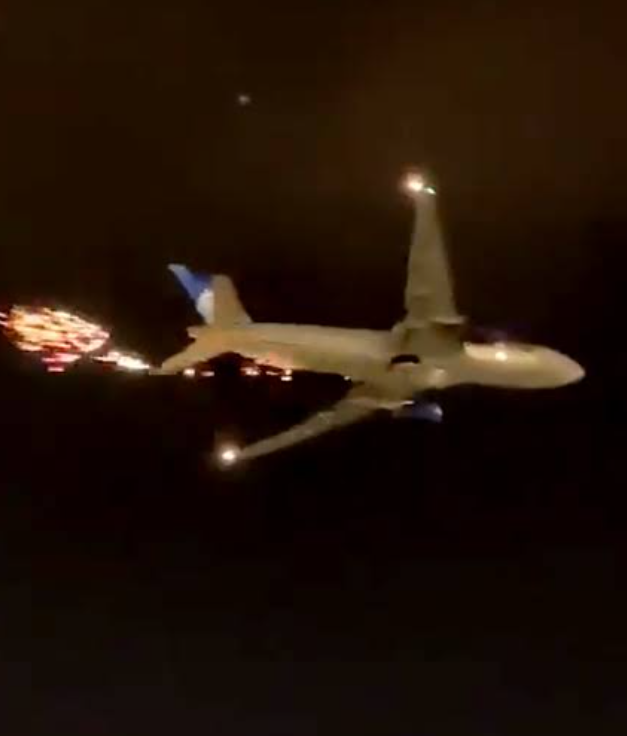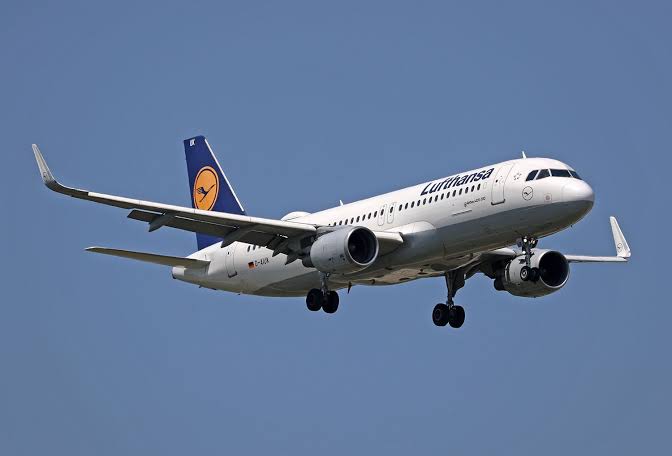38 Injured After ‘Unexpected Aircraft Movement’ on a United Flight
A United Airlines flight traveling from Lagos, Nigeria to Washington, D.C., was forced to make an emergency return to Lagos after experiencing a sudden and violent in-flight disturbance. The incident resulted in injuries to 38 people, including passengers and crew, and has triggered investigations from both U.S. and Nigerian aviation authorities.
The Incident
United Airlines Flight 613, a Boeing 787-8 Dreamliner, departed Murtala Muhammed International Airport in Lagos just before midnight local time. Approximately three and a half hours into the flight, while flying over Ivory Coast airspace, the aircraft encountered what the airline described as “unexpected aircraft movement.” The event caused turbulence-like conditions that reportedly threw passengers, unsecured items, and food trays into the air.
Videos shared by passengers on social media showed food, drinks, personal items, and even parts of the cabin ceiling strewn across the aisle. In one clip, frightened passengers are seen gripping seats, praying, and crying, while oxygen masks hang from the ceiling in a dimly lit cabin.
The crew declared an emergency and made a swift decision to return to Lagos. The flight landed safely around 3:22 a.m. local time.
The Injuries
According to Nigerian emergency services, 38 individuals were injured during the incident:
6 people — four passengers and two flight attendants — were hospitalized. Their injuries were initially described as “serious,” though United Airlines later labeled them as “minor.”
32 others, including 27 passengers and 5 crew members, were treated for minor injuries on-site by first responders.
All six hospitalized individuals were taken to Duchess International Hospital in Lagos, where they were treated and later released. Most injuries appeared to be the result of passengers not wearing seatbelts at the time of the incident or being struck by airborne items.
Suspected Cause
On March 18, nearly two months after the incident, the U.S. National Transportation Safety Board (NTSB) released a preliminary report stating that a navigation system malfunction likely caused the autopilot to disengage mid-flight.
Specifically, both of the aircraft’s inertial reference units (IRUs) — key components of its navigation system — failed during cruise. This malfunction led to a loss of reliable navigational input, causing the autopilot to disconnect and resulting in the aircraft making uncommanded pitch and roll movements.
These movements created the abrupt “plunge” sensation described by many passengers, which was not due to atmospheric turbulence but rather an internal system failure. One passenger suffered what the NTSB termed a “serious” injury as defined by federal aviation regulations.
United Airlines confirmed that it is cooperating fully with the ongoing investigation and that a full mechanical inspection of the aircraft has been completed.
Aircraft and Crew Response
The Boeing 787 involved in the incident had reportedly undergone regular maintenance and had no known issues prior to departure. However, aviation analysts have noted that the same aircraft had experienced a similar mid-flight issue just days earlier on another Washington-bound flight from Lagos.
In that earlier event, the plane reportedly lost altitude briefly before stabilizing and continuing the journey. The recurrence of issues with the same aircraft has led to increased scrutiny of United’s maintenance and diagnostic procedures.
According to United, the crew acted appropriately under pressure, following emergency protocols and prioritizing passenger safety. The pilots initiated a rapid descent and diverted back to Lagos within minutes of detecting the problem. Flight attendants were praised for managing cabin chaos and assisting injured passengers during the landing process.
Passenger Accounts
Many passengers recounted moments of panic and confusion. One traveler told Nigerian news outlet Channels TV, “It was like a rollercoaster. One moment I was watching a movie, and the next, I was up in the air and then slammed back into my seat.”
Another passenger said, “People were screaming, praying, and crying. I thought it was over for us.”
Some described food trays hitting the ceiling and personal belongings flying across rows. A few said they noticed the plane vibrating unusually just before the drop.
Response and Investigation
Emergency responders from Lagos State Emergency Management Agency (LASEMA) and local fire departments were on standby as the aircraft landed. Their quick intervention was credited with minimizing the impact of the incident.
Both the Nigerian Civil Aviation Authority (NCAA) and the Federal Airports Authority of Nigeria (FAAN) launched inquiries immediately following the event. Meanwhile, the NTSB was notified by Ivory Coast officials (whose airspace the plane was in during the malfunction) and took the lead on the technical investigation due to the aircraft being U.S.-operated.
United Airlines released a statement saying, “We are grateful for the quick response of our flight crew and the emergency services in Lagos. Our thoughts are with those who were injured, and we are supporting them during their recovery.”
Safety Implications
This incident underscores the vulnerability of even highly automated aircraft to internal system failures. While Boeing 787s are equipped with backup systems and multiple redundancies, a simultaneous failure of both inertial navigation units is rare and considered critical.
Aviation experts say the event may prompt regulators to re-evaluate inspection procedures for IRUs and autopilot software. Airlines could be asked to increase testing frequency of navigation subsystems and enhance pilot training for sudden autopilot disengagement scenarios.
The FAA and international aviation organizations may also issue updated guidelines on securing items in the cabin and ensuring passenger compliance with seatbelt signs.
Public Reaction
Public confidence in air travel remains strong overall, but the event sparked conversations about mid-air emergencies and passenger preparedness. United Airlines received both praise and criticism online — some applauding the crew’s professionalism, others questioning how the same aircraft could suffer similar problems twice within a short span.
Travel blogs and frequent flyer communities have debated whether United’s Lagos–Washington route should be temporarily grounded or subjected to enhanced scrutiny.
Conclusion
The January 24 incident aboard United Flight 613 serves as a reminder that even routine international flights can face unexpected and frightening challenges. While no lives were lost, the event highlights the importance of stringent aircraft maintenance, real-time crew response, and robust safety systems.
As the investigations continue, passengers and aviation professionals alike await more definitive answers on how such a critical system failure occurred — and what steps can be taken to prevent it in the future.






